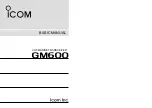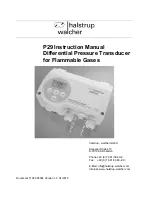
NSB–6
System Module
PAMS Technical Documentation
Page 6
Issue 1 06/2000
E
Nokia Mobile Phones Ltd.
Transceiver NSB–6
Introduction
The NSB–6 is a dual band transceiver unit designed for the GSM900 (in-
cluding EGSM) and GSM1900 networks. It is both GSM900 phase 2 power
class 4 transceiver (2W) and GSM1900 power class 1 (1W) transceiver.
The transceiver consists of System/RF module (UP9), Display module
(UX7) and assembly parts.
The transceiver has a full graphic display and the user interface is based
on a Jack style UI with two soft keys.
The NSB–6 transceiver uses internal PIFA antenna combined with ex-
tractable whip antenna.
The transceiver has a low leakage tolerant earpiece and an omnidirec-
tional microphone located to a slide, providing an excellent audio quality.
The transceiver supports a full rate, an enhanced full rate and a half rate
speech decoding.
An integrated IR link provides a connection between two NSB–6 trans-
ceivers or a transceiver and a PC (internal data), or a transceiver and a
printer.
The small SIM ( Subscriber Identity Module ) card is located underneath
the back cover of the phone.
Operation Modes
There are five different operation modes:
– power off mode
– idle mode
– active mode
– charge mode
– local mode
In the power off mode only the circuits needed for power up are supplied.
In the idle mode circuits are powered down and only sleep clock is run-
ning.
In the active mode all the circuits are supplied with power although some
parts might be in the idle state part of the time.
The charge mode is effective in parallel with all previous modes. The
charge mode itself consists of two different states, i.e. the fast charge and
the maintenance mode.
The local mode is used for alignment and testing.







































